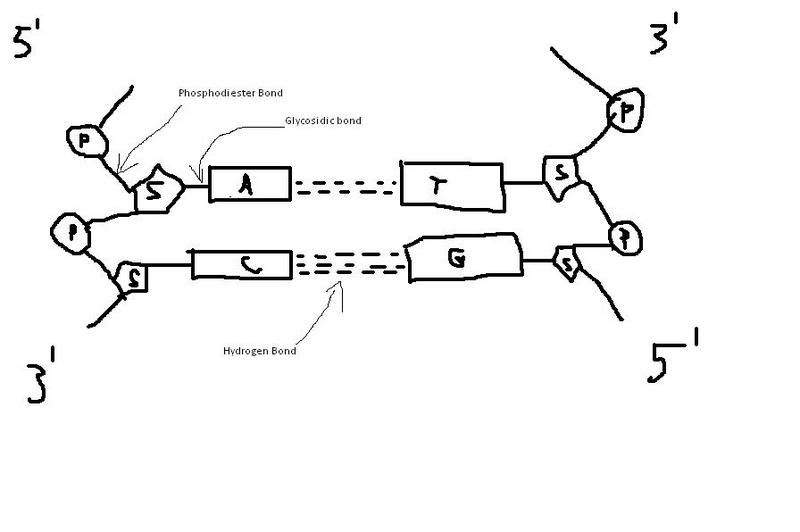Ok, here's a diagram of a basic DNA molecule that might help put some stuff I said in context.

EDIT: Please go look at the original image on photobucket itself (view image/drag and drop to address bar/whatever (for those of you who don't know >.>)), cbf rearranging/resizing it to fit this space.
This basically shows a double-stranded DNA molecule with some of the bonds present, also maybe make things easier to see.
P = Phosphate (circle thing), which I talked about earlier. It forms a sort of backbone along the spine of the DNA strand, as you can see.
S = Sugar (pentagon thing), which I also talked about earlier. In this case the sugar would be deoxy-ribose, since this is DNA. Bonded to P by a phosphodiester bond.
A, T, C, G = Nitrogenous Bases = Rectangle things. Yeah, these were what I was talking about, as you can see they are hydrogen bonded to their complements on the other strand of DNA.
Ok, few things I missed. T and C (U also) nitrogenous bases are actually called pyrimidines, a group that basically means single ringed structure. A and G are purines, meaning they have a double-ringed structure (much like caffeine~). For some reason, the hydrogen bonds between G and C bases are stronger than A and T, don't ask me why now, cbf. Probably just remember that.
Also, DNA strands are always bonded in opposite directions to each other. So one strand is upside down compared to the other when they are connected, symbolised by the 5' (5-prime) and 3' (3-prime) ends opposed to the 3' and 5' ends of the DNA strands. Just a side note, DNA and RNA can only be synthesised in the 5' to 3' direction. If you need more details on DNA/RNA replication please comment. Actually, comment anyway.
If you need more details on the actual structures of phosphate, sugars and bases, I will (not) draw them for you... Actually I can't really remember them. Lol, oh well. I bet your chem textbook/data sheet/google has it.
Yeah, anything you still need just put in the comment~
PS I think this is sort of helping my bio lol. Hooo~
EDIT #2: The poor kittens :'(
2 comments:
I would like to state that the most important thing is that one contains a triple hydrogen bond, and the other a double hydrogen bond. Not that I made this mistake in a test.
Yes, as you can clearly see from my pro diagram (dotted lines~)
I can't be bothered with actually finding out what the molecule looks like, mainly because I cbf.
Post a Comment